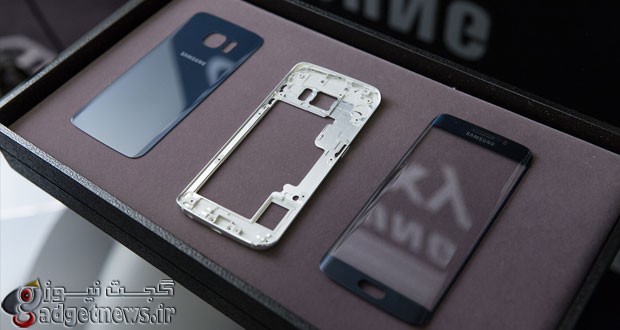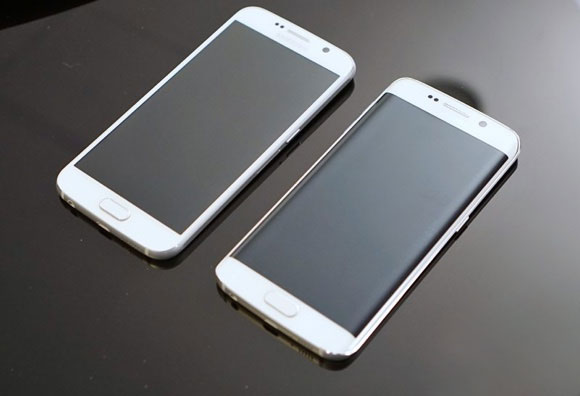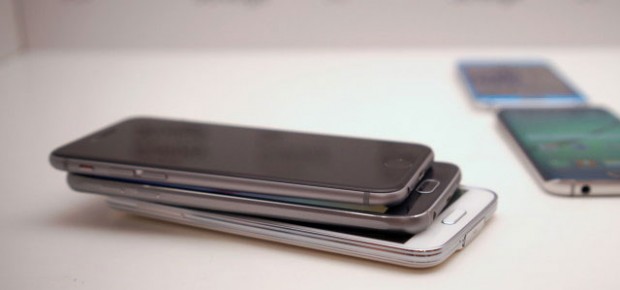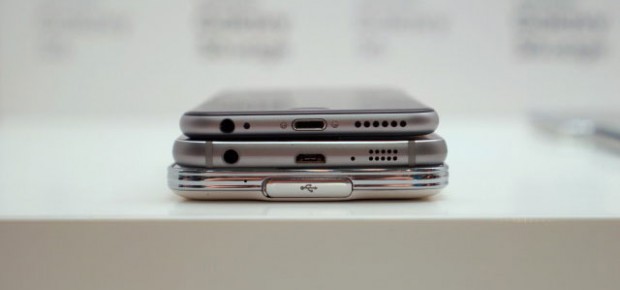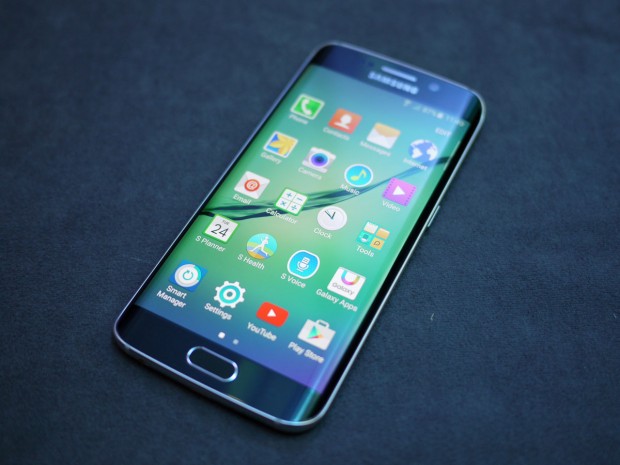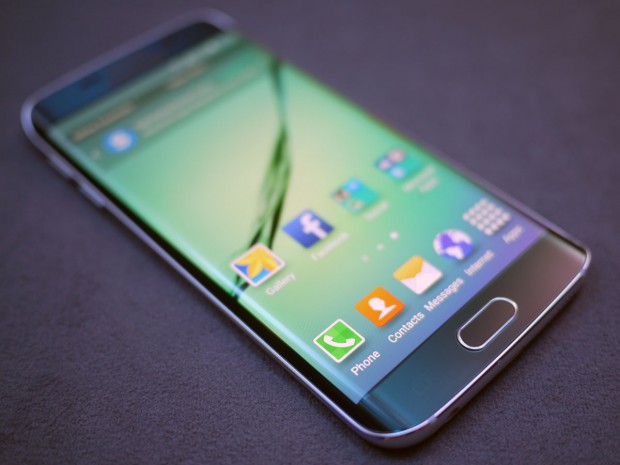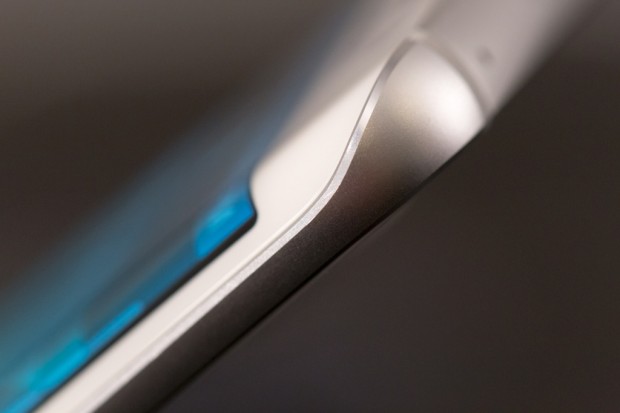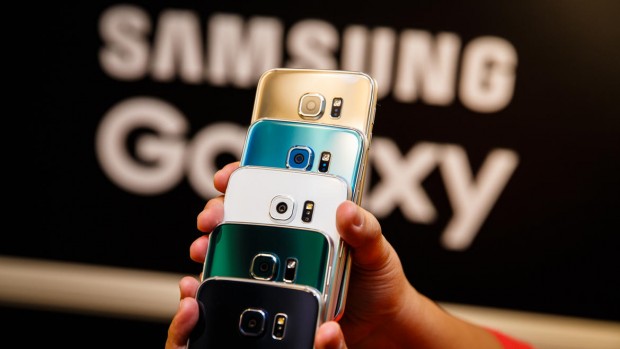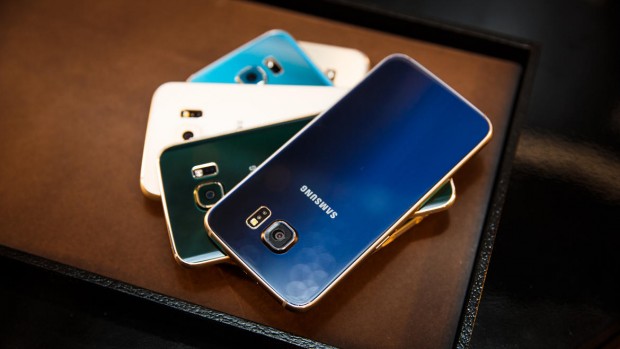کمپانی سامسونگ در نمایشگاه MWC 2015 کهکشانی های متفاوتی را معرفی کرد. دست کم میتوانیم بگوییم این گوشی ها در مقایسه با مدلهای قبلی سامسونگ متفاوت هستند و از یک تحول بزرگ در طراحی خبر میدهند. چون این شرکت برای سالهای طولانی اعتقاد داشت میتواند از بالا تا پایین و از پوسته یا هسته یک گوشی را با پلاستیک بسازد ولی امسال Galaxy S6 و Galaxy S6 Edge را بدنه ای زیبا از جنس فلز و شیشه شفاف رونمایی کرد. این تغییر طرفداران این شرکت و افرادی که به این گوشیها امید بسته بودند را خیلی خوشحال کرد و حتی گوشی Galaxy S6 Edge میتواند بسیار امیدوارانهتر در بازار ظاهر شود؛ اما چطور این اتفاق افتاد؟ از میان این همه شرکت چرا سامسونگ به سراغ تغییر مواد سازنده گوشی رفت در حالی که ویژگیهای مهمتری برای تغییر دادن وجود داشت؟
چرا سامسونگ طراحی گوشیهایش را ۱۸۰ درجه تغییر داد و به سراغ چیزهایی رفت که در گذشته خط قرمزش بودند؟
صفر
سامسونگ میگوید برای رسیدن به این طراحی گوشیهای Galaxy S6 و Galaxy S6 Edge از صفر شروع کرده است. به این معنی که از مفاهیم اولیه و اساسی طراحیهای قبلیاش؛ لبههای گرد پلاستیکی و پنل پشت چرمی و قاب پلاستیکی براق دست برداشته و یک گام به عقبتر رفته است.
براساس نظرات کاربران و متخصصین حرفهای و شکایاتی که از مدلهای قبلی به دستش رسیده، مطالعات و فرآیندهای طراحی جدیدی را استارت زده و سعی کرده از اول طراحی گوشیهایش را انجام دهد. شاید اینطور استدلال شود که سامسونگ نیاز نداشته است از صفر شروع کند یا برای عبور از طراحی مبتنی بر پلاستیک؛ طراحی جدیدی انجام نداده است. برای اینکه بفهمیم سامسونگ یک طراحی از صفر را انجام داده است یا خیر باید نگاهی به شبیهترین گوشی بازار به Galaxy S6 بیندازیم. اپل بعد از این همه سال و سابقه در طراحی، دستگاهی بسیار شبیه به Galaxy S6 ساخته است.
( در تصاویر بالا گلکسی اس 6 ، گلکسی اس 5 و آیفون 6 را در کنار هم مشاهده می کنید )
مقاله مرتبط : آیا سامسونگ در طراحی گلکسی اس ۶ از آیفون ۶ الهام گرفته است ؟
آیفون ۶ در جزئیاتی مانند چینش پورتها و سوراخهای کلیدهای پایین بسیار شبیه گوشی جدید سامسونگ است. اما با وجود این همه شباهت در جزئیات، سامسونگ در محل آنتنها و انتخاب مواد، متفاوت و مجزا کار کرده و کاملاً احساس میکنید Galaxy S6 فرق میکند. در حین حال، سامسونگ برخی طراحیها و ویژگیهای آشنای خودش مانند کلید Home گوشی و مرکز تنظیم لنز دوربین را حفظ کرده است.
کیفیت منحصربهفرد صفحهنمایش خمیده Galaxy S6 Edge این شرکت نیز حاصل بازخوردهایی است که پس از ارائه Note Edge از بازار به دست آورد. در واقع، صفحهنمایشی که اکنون میبینیم بازطراحی شده است و فرآیند توسعه آن متفاوت از گوشی خمیده قبلی این شرکت است؛ اگرچه در ظاهر شبیه هم هستند.
Note Edge دارای لبههای خمیده و یک صفحهنمایش مجزا بود که زیبا به نظر میرسید ولی بررسیها نشان میداد در نهایت غیرقابل استفاده و بیمصرف است. ولی Galaxy S6 Edge به این اشکال واکنش نشان داد و در حین حالی که زیبا است، کارایی دارد و عملکردی ساخته شده است.
در تضاد و به موازات گذشته
سامسونگ میگوید طراحی این گوشیها را از چند سال قبل آغاز کرده است و محدود به چند ماه گذشته یا ماههای توسعه پس از عرضه Galaxy S5 نیست. این شرکت تاکید میکند طراحی گوشیهای جدید به موازات طراحی و خط تولید گوشیهای Galaxy S5، Note و Note Edge بوده است. اگر این حرف سامسونگ را بپذیریم ولی نمیتوان قبول کرد که حرکت از طراحی مبتنی بر پلاستیک به سوی طراحی مبتنی بر فلز و شیشه بدون دردسر و سرسختی و فقط برحسب علاقه و مطالعات تحقیقاتی این شرکت بوده است. در واقع، سامسونگ برای رسیدن به اینجا مبارزه کرده است؛ یک مبارزه تمام عیار هم از درون با علاقهمندیها، اصولش و رویکردهای جاری و هم از بیرون با تقاضای بازار. این احتمال وجود دارد که کاهش سهم فروش جهانی این شرکت از بازار گوشیهای هوشمند موجب شده باشد که به صداهای درون شرکت برای تغییر و حرکت به سوی ساختن گوشیهای مناسب مد بازار گوش دهد.
احتمال دیگری هم مطرح است: تغییر سیاستهای کسبوکاری سامسونگ. بازار فروش اسمارتفون این شرکت در چین به شدت توسط شرکتهای چینی مانند شیائومی به خطر افتاده و از سویی دیگر با فروش آیفون ۶ و آیفون ۶S در کشورهای دیگر تهدید میشود. به هر حال، به هر دلیلی سامسونگ سنتشکنی کرده و دست به تغییری بزرگ در طراحی گوشی زده است و بیشتر به سوی ذائقه مشتریان حرکت کرده است. این تغییر استراتژی طراحی متضمن بازپسگیری سهم بازار از دست رفته و حوزههای اشغال شده توسط دیگر شرکتها نیست ولی مشخص است که نمیتواند برای طولانی مدت جوابگو باشد و موجب رشد فروش این شرکت شود.
عملیاتی شدن و شخصیت
حتا با وجودی که مواد سازنده گوشیها را تغییر دادند و سعی کردند با فشار به سوی نازکتر و صافتر شدن بروند ولی سامسونگ دوست نداشت به سوی ساختن گوشیهای خونسرد و کمتر دستیافتنی برود. به همین دلیل، آنها توسعه Galaxy S6 و Galaxy S6 Edge را پنهانی و در درون سیستم خودشان و به صورت زیرپوستی شروع کردند و بعد با رسیدن به گوشیهایی فلزی و جواهرمانند، برخی مزایا را بدانها افزودند و برای محافظت ازشان در مقابل خش و ضربه از شیشه Gorilla Glass 4 برای رویهه بیرونی استفاده کردند.
افزودن گزینههای انتخاب رنگ و ساخت مدلهایی خاص از هر مدل گوشی، نشان میدهد سامسونگ به این درک و آگاهی رسیده است که باید به صدای مشتریان گوش دهد و از جمله اینکه دوست دارند گوشی شخصی خودشان را با شکل و شمایلی متفاوت از آنچه در بازار میبینند، داشته باشند تا شخصیتشان را نشان بدهند. در ساعتهای هوشمند، افزودن تنوع رنگ و مدلهای سفارشی محتملتر به نظر میرسد ولی درباره گوشی و این تغییر سامسونگ باید بگوییم در غریزهاش تجدیدنظر کرده است. چون سامسونگ شرکتی است که اعتقاد دارد باید یک مدل عمومی از هر گوشی تولید کرد و خود مشتری به صورت دستی اقدام به سفارشیسازی و شخصیسازی گوشی کند.
در بخش عملیاتی قضیه، طراحان سامسونگ برخی تغییرات را روی گوشیهای جدید اعمال کردند که انعکاس چالشهای کاربری طراحی گوشیهای قبلی هستند. بلندگوهای رو به عقب با بلندگوهای رو به پایین جایگزین شدند تا به گفته سامسونگ صدا ۱٫۵ برابر بلندتر شنیده شود. همچنین، امکان سفارشیسازی رنگ LED براساس تماسها وجود دارد و میتوانید با سرعت زیاد تنظیمات گوشی را از حالت سنسور IR عقب به دوربین تغییر دهید. این کار با یک بار فشار دادن کلید اثرانگشت امکانپذیر است و دیگر نیازی به بلند کردن گوشی نیست. در طراحی گوشیهای جدید جزئیات زیادی رعایت شده است که تجربه کاربری متفاوتی به دست میدهد و این میتواند هیجانانگیز باشد.
این طراحی زنده میماند؟
بزرگترین سوال پیشرو این است که آیا این تغییر استراتژی طراحی در گوشیهای جدید سامسونگ از سوی بازار مثبت تلقی میشود و میتواند روند کاهشی فروش گوشی این شرکت را متوقف و حتا افزایشی کند و وضعیت سامسونگ در حوزه اسمارتفون را سروسامان بدهد؟ تنها این سوال نیست. سوال دیگر این است که چرا سامسونگ دست به این همه تغییر و بهروزرسانی فقط براساس مشاهده و احساسش زده است؟ نهایتاً بازار است که جواب این سوالها را میدهد. زمان میبرد تا بفهمیم طراحی جسورانه گوشیهای جدید سامسونگ یک تهدید و تصمیم اشتباه بوده است یا اینکه سیاست محافظهکاران این شرکت در طراحی گوشیهای قبلی بهتر بود.
منبع : techcrunch
The Story Behind Samsung’s Galaxy S6 And S6 Edge Design Departure
The Story Behind Samsung’s Galaxy S6 And S6 Edge Design Departure
And for those who wondered what a Samsung smartphone using premium materials might feel like, the Galaxy S6 edge in particular is a very promising result. But how did Samsung, of all companies, ever launch a device where design was the primary tentpole feature?
Zero
To get to the Galaxy S6 and S6 edge, Samsung says it had to start from zero – meaning tossing out the design book that led to dimpled plastic mock-leather backs and shiny plastic hamburger outer ridges. It means taking a step back and opening up the design process to feedback, listening to the complaints of both professionals and consumers regarding Samsung’s previous design choices, and then building anew from there.
To get to the Galaxy S6 and S6 edge, Samsung says it had to start from zero.
Some might argue that Samsung didn’t start from nothing when it decided to move away from its plastic design legacy. Apple, after all, has created devices that look quite similar to the Galaxy S6, and details like the arrangement of ports and holes on the bottom edge of that hardware do look quite similar to the current setup at the base of an iPhone 6. But despite familiar port layouts, antenna placement and materials choices, the new Galaxy phones still feel distinctly Samsung, perhaps in part because they’ve retained familiar features like the rounded rectangle home button and center-set camera lens.
And the unique qualities of the curved display not the S6 edge are also Samsung through-and-through, with a reeling-in of a far-out feature the company introduced last year which in some ways helps illustrate down their entire product development process. The Note Edge has a curved edge with a dedicated display, which appears continuous with the rest. Reviewers mostly found that cute but ultimately extraneous, however, and the S6 edge is an iteration in action based on that response: it’s mostly aesthetic, rather than functional, and it contributes what it needs to without ending up feeling flippant.
At Odds, And In Parallel With The Past
Samsung says the design for these devices has been in the works for the past several years, rather than over the course of a few months or just since the Galaxy S5 was introduced. Its design came about in parallel with the choices made on the S5, Note and Note Edge line, though you also get the sense from the company that there were clear camps that favored one track vs. the other, and that the kind of metal-and-glass approach used on the S6 didn’t gain ascendancy without struggle.
It’s possible that Samsung’s recent struggles in its dominance of the global smartphone market helped give credence to voices within the company that sought to change their reputation for making handsets that seemed more functional than fashionable. It’s also likely due to the changing nature of Samsung’s business: The company was knocked off its lofty perch atop the key greater China smartphone market, first by Xiaomi undercutting its wide product range on price, then by Apple outdoing it in the premium sector with iPhone 6 and 6 Plus.
Whatever the reason, Samsung has decided to break with tradition and take a risk on a design more in line with what premium customers expect. It’s not a guarantee that they’ll be able to retake lost ground in that segment, but it’s clear the opposite strategy wasn’t working in terms of long-term growth.
Practicality And Personality
Even though they changed their material strategy, with the added pressure to continue to offer ever-thinner and sleeker devices, Samsung didn’t want to also make their devices colder and less approachable. That’s why they developed, in-house, the sub-surface reflective coating that gives the GS6 and S6 edge its metallic- or jewel-like finish, which has the added benefit of being protected from scratching or marring itself thanks to being underneath the Gorilla Glass 4 outer surface.
The color options, including the bold and bright exclusive options for each model, were Samsung’s attempt to acknowledge that increasing desire on the part of consumers for a device that reflects their own personality. In smart watches, the trend towards greater customization is clear, but Samsung’s design choices are meant to appeal to that same instinct, in a way that still maintains the same general device feel and handheld user experience across variations.
On the practical side, Samsung’s designers made some changes that reflect usability challenges with previous designs. The rear-facing speaker is replaced with a downward facing one, which Samsung says makes for 1.5 times louder sound. There’s also a customizable LED with color options based on who’s contacting you, and quick reply settings that you can assign to the rear IR sensor next to the camera, so that you can automatically respond with just a finger press without ever lifting the phone off the table.
Designers also made sure to extend the metallic frame above the glass surface all the way around the edge, in an effort to make it less likely to shatter in case of a fall. This was a passion project that emphasized user experience in minute detail.
Can Design Save?
The big question about making design the central selling point of the Galaxy S6 is whether or not it can turn things around for Samsung’s smartphone division, and help it resume growth and reclaim its position of absolute global device dominance. There’s no question, in my mind, that what Samsung has done vastly improves upon its existing track record of hardware look and feel, but ultimately the market will have the final say.
This was a passion project that emphasized user experience in minute detail.
That may dictate whether or not Samsung takes more of these kinds of design risks in the future, instead of the kind of conservative approach that has been the hallmark of Samsung’s Galaxy flagships over the course of the past few years.
 گجت نیوز آخرین اخبار تکنولوژی، علم و خودرو
گجت نیوز آخرین اخبار تکنولوژی، علم و خودرو 






